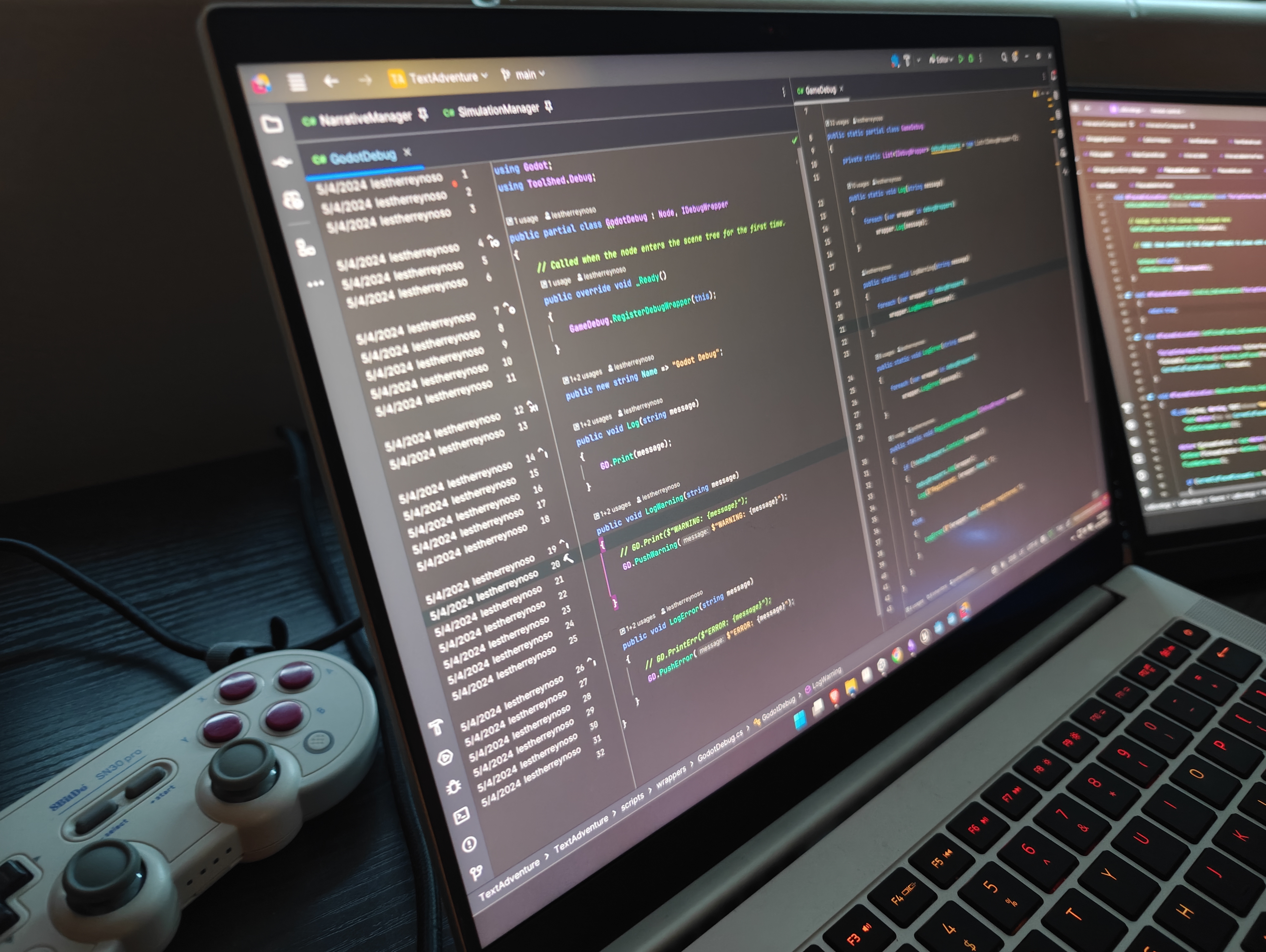In many first-person or third-person games, a core feature is the ability to look at and interact with objects in the world whether it’s opening a door, picking up an item, or talking to an NPC.
For this project, I implemented a modular Interactable System in Unreal Engine using trace channels, interfaces, and clean input handling. The system supports reusable and scalable interactions across different gameplay scenarios.
Core Concept
The interactable system separates responsibilities between two types of actors:
- Interactor: An entity capable of detecting and interacting with other objects (e.g. the player).
- Interactable: Any actor in the world that can be interacted with (e.g. a button, lever, or item).
Detection: Looking at Things in the World
To detect potential interactables, I created a custom trace channel and a trace-based detection method.
New Trace Channel: Interactable
- In the Unreal Project Settings, I defined a new Trace Channel named
Interactable. - All interactable actors are set to Block on this trace channel.
Player Detection: Sphere Trace
The player performs a Sphere Trace each frame or on a tick to detect objects within interaction range.
void UInteractorComponent::UpdateTrace()
{
FHitResult HitResult;
if (FireSphereTraceFromCamera(HitResult))
{
DrawDebugSphere(GetWorld(), HitResult.ImpactPoint, SphereRadius, 10, FColor::Red);
AActor* HitActor = HitResult.GetActor();
if (HitActor == nullptr)
{
UE_LOG(LogTemp, Warning, TEXT("Hit Actor is null."))
return;
}
if (!HitActor->Implements<UInteractableInterface>())
{
UE_LOG(LogTemp, Warning, TEXT("Hit Actor does not implement UInteractableInterface."))
return;
}
if (HitActor != CurrentInteractableActor || HitResult.Distance > IInteractableInterface::Execute_GetInteractRange(HitActor))
{
ClearCurrentInteractable();
}
if (HitActor != CurrentInteractableActor && HitResult.Distance <= IInteractableInterface::Execute_GetInteractRange(HitActor))
{
CurrentInteractableActor = HitActor;
CurrentInteractable = TScriptInterface<IInteractableInterface>(CurrentInteractableActor);
CurrentInteractable->Execute_EnterFocus(CurrentInteractableActor);
}
}
}
This trace allows a bit of forgiveness for imperfect aim and enables support for interactables at slight angles from the player’s center.
Marking Actors as Interactable
To allow actors to respond to player input, they must implement an interface and provide behavior for when they are interacted with.
InteractableInterface
This interface defines the contract any interactable actor must follow.
UINTERFACE(MinimalAPI, Blueprintable)
class UInteractableInterface : public UInterface
{
GENERATED_BODY()
};
class IInteractableInterface
{
GENERATED_BODY()
public:
UFUNCTION(BlueprintCallable, BlueprintNativeEvent, Category = "Interactable")
void Interact();
UFUNCTION(BlueprintCallable, BlueprintNativeEvent, Category = "Interactable")
void EnterFocus();
UFUNCTION(BlueprintCallable, BlueprintNativeEvent, Category = "Interactable")
void ExitFocus();
UFUNCTION(BlueprintCallable, BlueprintNativeEvent, Category = "Interactable")
bool IsFocused();
UFUNCTION(BlueprintCallable, BlueprintNativeEvent, Category = "Interactable")
float GetInteractRange();
};
Player Interaction
When the player presses the interaction key:
- The system checks if the player is currently targeting a valid
InteractableInterface. - If so, it calls the interface’s
Interact_Implementation()method.
UCLASS()
class AInteractable : public AActor, public IInteractableInterface
{
GENERATED_BODY()
public:
AInteractable();
// The range the player must be to allow interaction
UPROPERTY(BlueprintReadWrite)
float InteractRange = 200.f;
protected:
virtual void BeginPlay() override;
bool IsCurrentlyFocused = false;
void SetCollisionEnabled(bool bEnabled);
public:
virtual void Tick(float DeltaTime) override;
/*
* InteractableInterface
*/
virtual void Interact_Implementation() override;
virtual float GetInteractRange_Implementation() override;
virtual void EnterFocus_Implementation() override;
virtual void ExitFocus_Implementation() override;
virtual bool IsFocused_Implementation() override;
/*
* End InteractableInterface
*/
protected:
UPROPERTY(EditAnywhere, BlueprintReadOnly, Category = "Components", meta = (AllowPrivateAccess = "true"))
UStaticMeshComponent* BaseMesh;
};
This approach decouples the input logic from the actor behavior, making the system flexible and extendable.
Example Usage
Imagine walking up to a glowing terminal. The player looks at it, presses the interaction key, and:
- A sound plays
- A UI panel opens
- The terminal changes color
All of this behavior is contained within the terminal’s Interact_Implementation() method, cleanly separated from the player logic.
Summary
This interactable system includes:
- A dedicated trace channel for performance and clarity.
- A sphere trace for forgiving and flexible targeting.
- A clean interface-based architecture for interaction logic.
- Input handling that keeps player code simple and scalable.
It enables rich, immersive world interaction with minimal coupling ideal for large-scale or sandbox-style gameplay systems.



